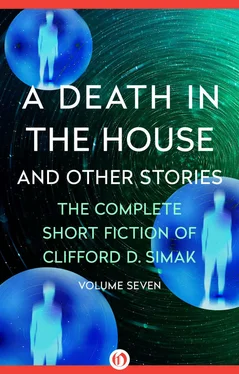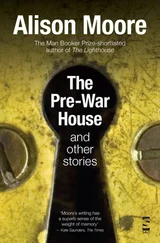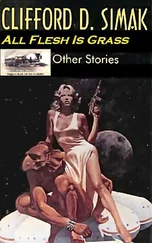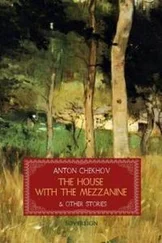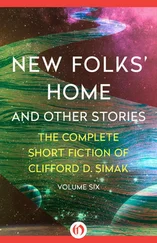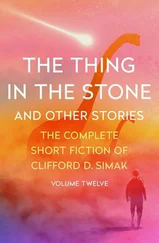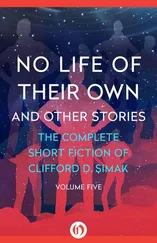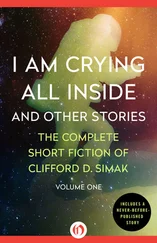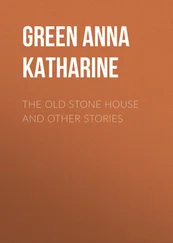And then it hit me.
Plant was a plant and flowers were plants and so was lumber, or at least lumber at one time had been a plant. And I stood there, with the bouquet dangling in my hand and Plant looking at me, and I thought of all the shocks he had in store when he found out more about us—how we slaughtered our forests, grew plants for food and clothing, squeezed or boiled drugs from them.
It was just like a human going to another planet, I realized, and finding that some alien life form grew humans for food.
Plant didn’t seem to be sore at me nor did he shrink from me in horror. He was just sad. When he got sad, he was the saddest-looking thing you could possibly imagine. A bloodhound with a hangover would have looked positively joyous in comparison.
If we ever had gotten to the point where we could have really talked—about things like ethics and philosophy, I mean—I might have learned just how Plant felt about our plant-utilizing culture. I’m sure he tried to tell me, but I couldn’t understand much of what he was driving at.
We were sitting out on the steps one night, looking at the stars. Earlier, Plant had been showing me his home planet, or it may have been some of the planets he had visited. I don’t know. All I could get were fuzzy mental pictures and reactions. One place was hot and red, another blue and cold. There was another that had all the colors of the rainbow and a cool, restful feel about it, as if there might have been gentle winds and fountains and birdsongs in the twilight.
We had been sitting there for quite a while when he put his hand back on my arm again and he showed me a plant. He must have put considerable effort into getting me to visualize it, for the image was sharp and clear. It was a scraggy, rundown plant and it looked even sadder than Plant looked when he got sad, if that is possible. When I started feeling sorry for it, he began to think of kindness and, when he thought of things like kindness and sadness and gratitude and happiness, he could really pour it on.
He had me thinking such big, kindly thoughts, I was afraid that I would burst. While I sat there, thinking that way, I saw the plant begin to perk up. It grew and flowered and was the most beautiful thing I had ever seen. It matured its seeds and dropped them. Swiftly, little plants sprang from the seeds and they were healthy and full of ginger, too.
I mulled that one over several days, suspecting I was crazy for even thinking what I did. I tried to shrug it off, but it wouldn’t shrug. It gave me an idea.
The only way I could get rid of it was to try it out.
Out in back of the toolshed was the sorriest yellow rose in town. Why it clung to life, year after year, I could never figure out. It had been there ever since I was a boy. The only reason it hadn’t been dug up and thrown away long ago was that no one had ever needed the ground it was rooted in.
I thought, if a plant ever needed help, that yellow rose was it.
So I sneaked out back of the toolshed, making sure that Plant didn’t see me, and stood in front of that yellow rose. I began to think kindly thoughts about it, although God knows it was hard to think kindly toward such a wretched thing. I felt foolish and hoped none of the neighbors spotted me, but I kept at it. I didn’t seem to accomplish much to start with, but I went back, time after time. In a week or so, I got so that I just naturally loved that yellow rose to pieces.
After four or five days, I began to see some change in it. At the end of two weeks, it had developed from a scraggy, no-account bush to one that any rose fancier would have been proud to own. It dropped its bug-chewed leaves and grew new ones that were so shiny, they looked as if they were waxed. Then it grew big flower buds and, in no time at all, was a blaze of yellow glory.
But I didn’t quite believe it. In the back of my mind, I figured that Plant must have seen me doing it and helped along a bit. So I decided to test the process again where he couldn’t interfere.
Millie had been trying for a couple of years to grow an African violet in a flower pot at the office. By this time, even she was willing to admit it was a losing battle. I had made a lot of jokes about the violet and, at times, Millie had been sore at me about it. Like the yellow rose, it was a hard-luck plant. The bugs ate it. Millie forgot to water it. It got knocked onto the floor. Visitors used it for an ashtray.
Naturally, I couldn’t give it the close, intensive treatment I’d given the rose, but I made a point to stop for a few minutes every day beside the violet and think good thoughts about it and, in a couple of weeks, it perked up considerably. By the end of the month, it had bloomed for the first time in its life.
Meanwhile, Plant’s education continued.
At first, he’d balked at entering the house, but finally trusted me enough to go in. He didn’t spend much time there, for the house was too full of reminders that ours was a plant-utilizing culture. Furniture, clothing, cereal, paper—even the house itself—were all made of vegetation. I got an old butter tub and filled it with soil and put it in one corner of the dining room, so he could eat in the house if he wanted to, but I don’t remember that he even once took a snack out of that tub.
Although I didn’t admit it then, I knew that what Plant and I had tried to do had been a failure. Whether someone else might have done better, I don’t know. I suspect he might have. But I didn’t know how to go about getting in touch and I was afraid of being laughed at. It’s a terrible thing, our human fear of ridicule.
And there was Plant to consider, too. How would he take being passed on to someone else? I’d screw up my courage to do something about it, and then Plant would come up out of the garden and sit beside me on the steps, and we’d talk—not about anything that mattered, really, but about happiness and sadness and brotherhood, and my courage would go glimmering and I’d have to start all over again.
I’ve since thought how much like two lost children we must have been, strange kids raised in different countries, who would have liked to play together, except neither knew the rules for the other’s games or spoke the other’s language.
I know … I know. According to common sense, you begin with mathematics. You show the alien that you know two and two are four. Then you draw the Solar System and show him the Sun on the diagram and then point to the Sun overhead and you point to Earth on the diagram, then point to yourself. In this way, you demonstrate to him that you know about the Solar System and about space and the stars and so on.
Then you hand him the paper and the pencil.
But what if he doesn’t know mathematics? What if the two-plus-two-makes-four routine doesn’t mean a thing to him? What if he’s never seen a drawing? What if he can’t draw—or see or hear or feel or think the way you do?
To deal with an alien, you’ve got to get down to basics.
And maybe math isn’t basic.
Maybe diagrams aren’t.
In that case, you have to search for something that is.
Yet there must be certain universal basics.
I think I know what they are.
That, if nothing else, Plant taught me.
Happiness is basic. And sadness is basic. And gratitude, in perhaps a lesser sense. Kindness, too. And perhaps hatred—although Plant and I never dealt in that.
Maybe brotherhood. For the sake of humanity, I hope so.
But kindness and happiness and brotherhood are awkward tools to use in reaching specific understanding, although in Plant’s world they may not be.
It was getting on toward autumn and I was beginning to wonder how I’d take care of Plant during the winter months.
I could have kept him in the house, but he hated it there.
Читать дальше
